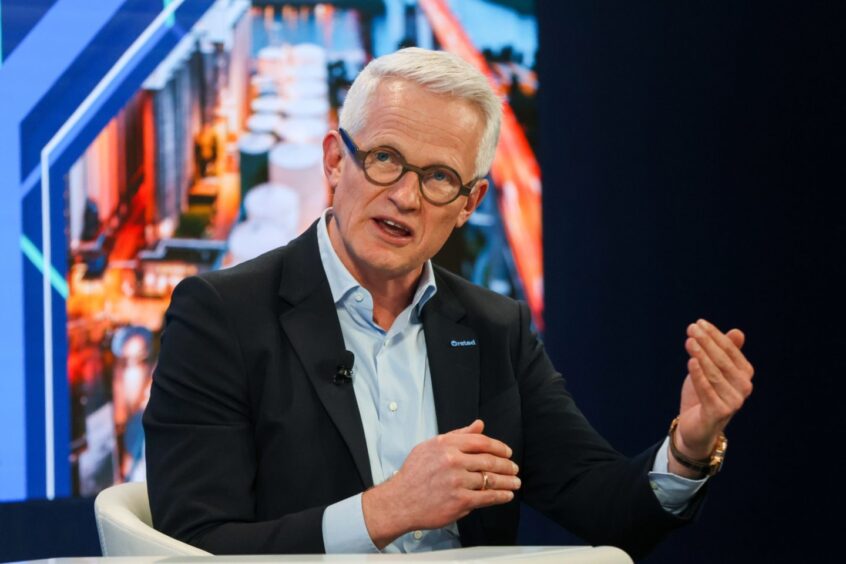 © Bloomberg
© Bloomberg Orsted said on Monday that it expects to record an operating profit of 24.8 billion Danish kroner (US$3.4b) for 2024, a slight uptick on 2023, despite being hit with a hefty US impairment bill.
On an investor call on Tuesday, the group’s president and chief executive Mads Nipper said operations “continue to perform well”.
The company said in a statement that annual earnings before interest, taxes, depreciation and amortisation (EBITDA) for 2024 were “in line with guidance”.
Nipper said operational earnings from onshore and offshore assets were the “main contributors” to operating profit last year and have “delivered in line” with expectations.
In 2023, Orsted recorded group EBITDA of 24b kroner ($3.3b) excluding new partnerships and cancellation fees, a majority of which came from its offshore wind businesses.
The company said on Monday that it was hit by a 12.1b kroner ($1.6b) impairment in the US market related to interest rate increase, seabed leases, and delays to the 924MW offshore wind farm Sunrise Wind.
Nipper said a defect in the high-voltage direct current (HVDC) cable had forced the company to change the construction set-up at Sunrise, necessitating a redesign, with ongoing final tests expected to be finalised in Q1 2025 and result in increased vessel costs.
Orsted also expects to record an impairment of 3.5b kroner ($489.1m) due to the “reduced” book value of seabed leases off the costs of New Jersey, Maryland and Delaware.
It recorded a 75 basis-point increase in the weighted average cost of capital in the fourth quarter due to an increase in long-dated US interest rates, leading to an impairment of 4.3b kroner ($600m) relating to these “adverse developments” in the US market.
Nipper described the impairments and construction challenges as “very disappointing”, adding that the change in interest rates had led to a “decrease in value creation”. He explained that the US market is a new region for Orsted and remains a nascent market.
The mid-single digit internal rate of return (IRR) on the project is not expected to take into account the incoming presidency, Nipper added.
In a ‘pre-close’ presentation, Orsted said that low availability at Hornsea 1 and 2 in the UK during the first half of 2024 had resulted in “curtailment” of the wind farms due to electrical infrastructure affecting export cables.
The company said it planned to “farm down”, or sell, a minority 12.45% stake in offshore wind farms Hornsea 1, Hornsea 2, the Walney Extension, the Burbo Bank Extension. Those transactions closed on 31 December, with “no EBITDA gain”, it added.
According to a person familiar with the matter, Hornsea 4 is expected to reach a final investment decision (FID) in the autumn, while Hornsea 3 has reached FID and secured OEM contracts including with Siemens Gamesa as the supplier of offshore turbines.
The wind developer said in its fourth quarter presentation that continued execution of its divestment proceed is expected to yield proceeds of 70-80b kroner ($9.7-11.1b) from 2024 to 2026, roughly evenly split over the three years.
Orsted announced a restructuring of its operations in 2022, splitting its business into regions including Europe, the Americas and Asia-Pacific.
Its share price fell 10.73% by the time the market closed on Tuesday, at 278.70 kroner, down from 312.20 kroner at close of trading on Monday.
The company did not return comment before publication.
